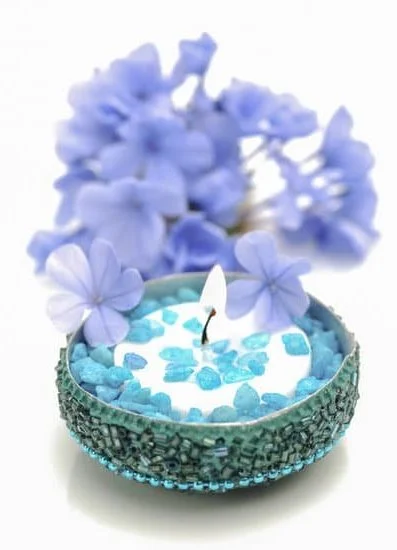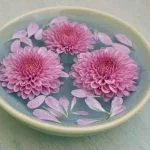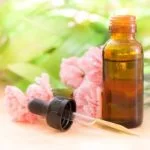Are you looking to create your own natural aromatherapy spray at home? In this article, we will explore how to make natural aromatherapy spray using essential oils and other natural ingredients. Aromatherapy has been used for centuries as a holistic healing treatment, and creating your own aromatherapy spray allows you to tailor the scent and benefits to your personal preferences.
Aromatherapy involves using essential oils from plants to promote physical and emotional well-being. The use of these potent oils can help reduce stress, improve sleep, elevate mood, and even alleviate certain physical ailments. By understanding the power of natural ingredients and their aromatherapy properties, you can customize your own spray to target specific wellness goals.
When making a natural aromatherapy spray, selecting the right base is crucial. Whether it’s distilled water, witch hazel, or aloe vera, the base serves as the carrier for the essential oils while providing additional benefits on its own.
Understanding how to dilute essential oils properly is also key to ensuring safe and effective use of your DIY spray. Stay tuned as we delve into essential oil blends for different purposes, DIY recipes for creating your own blends, tips for storing and preserving your spray, and ways to enhance your aromatherapy experience in daily routines and self-care practices.
Understanding the Power of Natural Ingredients
Essential oils are the cornerstone of aromatherapy and play a crucial role in providing various benefits for physical, emotional, and mental well-being. These natural plant extracts are highly concentrated and have potent aromatic properties that can positively impact our health. When used in a natural aromatherapy spray, essential oils can create a soothing ambiance, promote relaxation, or even uplift the mood.
One of the key aspects of creating a natural aromatherapy spray is understanding the properties of essential oils. For example, lavender essential oil is known for its calming and sleep-inducing effects, while citrus oils like lemon and orange are energizing and refreshing. By familiarizing yourself with the unique characteristics of different essential oils, you can tailor your DIY spray blends to serve specific purposes.
When learning how to make natural aromatherapy spray, it’s important to be mindful of the potential effects of each essential oil. Some oils may not be suitable for individuals with certain medical conditions or sensitivities, so it’s crucial to research and consult with healthcare professionals if needed. Additionally, understanding the benefits and properties of essential oils allows you to create custom blends that cater to your personal preferences and well-being needs.
Incorporating essential oil knowledge into your DIY aromatherapy spray formulations opens up a world of possibilities for creating personalized scents that support overall wellness. Whether you’re looking to unwind after a long day or boost your focus and concentration, harnessing the power of natural ingredients in your homemade sprays can enhance your self-care routine and contribute to a healthier lifestyle.
| Essential Oil | Aromatherapy Properties |
|---|---|
| Lavender | Calming, Sleep-Inducing |
| Lemon & Orange | Energizing, Refreshing |
Selecting the Right Base for Your Aromatherapy Spray
When making a natural aromatherapy spray, one of the key decisions you will need to make is selecting the right base for your blend. The base serves as the foundation of your aromatherapy spray and helps to disperse the essential oils evenly.
There are several options to choose from, but the most commonly used bases are distilled water, witch hazel, and aloe vera. Each of these bases offers unique benefits and properties that can enhance the efficacy of your aromatherapy spray.
Distilled Water
Distilled water is a popular choice for creating aromatherapy sprays because it is pure and free from contaminants. It serves as an excellent carrier for essential oils, allowing them to be dispersed evenly when the spray is used. When using distilled water as a base, it’s important to store your aromatherapy spray in a cool, dark place to prevent bacterial growth.
Witch Hazel
Witch hazel is known for its astringent properties and is often used in skincare products. When used as a base for an aromatherapy spray, witch hazel helps to preserve the essential oils and extend the shelf life of the spray. It also provides a natural toning effect on the skin when applied.
Aloe Vera
Aloe vera is revered for its soothing and moisturizing properties, making it an ideal base for an aromatherapy spray designed for use on the skin. Aloe vera can help to hydrate and calm irritated skin while acting as a carrier for essential oils. Additionally, it adds an extra layer of nourishment to your DIY aromatherapy spray.
When deciding on which base to use for your natural aromatherapy spray, consider both the intended use of the spray and any additional benefits you want it to provide. Experimenting with different bases can help you find the perfect combination that suits your needs and preferences when making natural aromatherapy sprays at home.
Essential Oil Blends for Different Purposes
Calming Essential Oil Blends
Creating a calming aromatherapy spray can help promote relaxation and reduce stress and anxiety. Some essential oils that are known for their calming properties include lavender, chamomile, and bergamot. These oils can be blended together to create a soothing and peaceful aroma that is perfect for use during meditation, before bedtime, or whenever you need to unwind and de-stress.
Energizing Essential Oil Blends
If you’re looking to boost your energy levels and increase focus and productivity, an energizing aromatherapy spray may be just what you need. Essential oils like peppermint, eucalyptus, and citrus oils such as lemon or orange are great choices for creating an invigorating blend. These oils can help stimulate the senses and provide a natural pick-me-up when you’re feeling sluggish or tired.
Mood-Boosting Essential Oil Blends
When you’re in need of a mood lift or want to create a positive and uplifting atmosphere, consider making a mood-boosting aromatherapy spray. Ylang-ylang, geranium, and jasmine are some of the essential oils that are known for their mood-enhancing properties. Combining these oils into a refreshing spray can help elevate your spirits and create a sense of positivity and happiness in any environment.
By experimenting with different essential oil blends, you can customize your aromatherapy sprays to suit your specific needs and preferences. Whether you’re looking to relax, energize, or improve your mood, there’s an endless variety of natural scent combinations to explore in order to enhance your well-being.
The Art of Dilution
When it comes to creating your own natural aromatherapy spray, the art of dilution is crucial for ensuring safe and effective use. Dilution refers to the process of blending essential oils with a base ingredient to reduce their potency and make them suitable for topical application. This not only helps to prevent skin irritation or sensitization but also ensures that the aromatherapeutic properties of the essential oils are experienced without overwhelming the senses.
Here are some key considerations and guidelines for achieving the perfect balance through dilution:
- Understanding Dilution Ratios: Essential oils should never be applied directly to the skin as they are highly concentrated and can cause irritation. It is important to follow recommended dilution ratios, which typically range from 1% to 5% depending on the purpose of the blend.
- Choosing the Right Base: The choice of base ingredient also plays a crucial role in dilution. Common options include distilled water, witch hazel, and aloe vera, each offering its own benefits for diluting essential oils.
- Experimenting with Blends: Different essential oils have varying strengths and properties, so it’s important to experiment with different blends and observe how they react with your chosen base. This will help you determine the ideal dilution ratio for each specific blend.
Achieving the perfect balance through dilution not only ensures safety but also enhances the overall effectiveness of your natural aromatherapy spray. By carefully considering dilution ratios, choosing suitable base ingredients, and experimenting with blends, you can create customized sprays tailored to your specific needs while enjoying their therapeutic benefits.
Now that you’ve gained insight into the art of dilution, let’s explore some DIY aromatherapy spray recipes that you can easily create at home using natural ingredients.
DIY Aromatherapy Spray Recipes
Making your own natural aromatherapy spray is a simple and enjoyable way to reap the benefits of essential oils. Not only can you tailor the scents to suit your preferences, but you also have control over the ingredients, ensuring that your spray is free from synthetic fragrances and harmful chemicals. In this section, we will explore step-by-step instructions for creating your own blends of natural aromatherapy spray.
To start, you will need a few key ingredients: distilled water, witch hazel or aloe vera as a base, and essential oils. Distilled water serves as the main component of the spray, while witch hazel or aloe vera acts as an emulsifier to help distribute the essential oils evenly.
When choosing essential oils for your blend, consider their aromatherapy properties and effects. For example, lavender is known for its calming properties, while citrus oils like lemon and orange are energizing and mood-boosting.
Once you have gathered your ingredients, the next step is to decide on the ratio of essential oils to base. This is where the art of dilution comes into play. It’s crucial to dilute essential oils properly to ensure safe and effective use.
A general guideline is to use 15-20 drops of essential oil per 2 ounces of base (distilled water, witch hazel, or aloe vera). However, it’s important to research specific recommendations for each essential oil before making your blend.
In addition to dilution ratios, it’s also important to consider any potential sensitivities or allergies when creating your natural aromatherapy spray. Always perform a patch test before using the spray on larger areas of skin. By following these step-by-step instructions and guidelines for creating aromatherapy sprays, you can enjoy the therapeutic benefits of natural scents in a safe and personalized way.
Tips for Storing and Preserving Your Natural Aromatherapy Spray
When it comes to making your own natural aromatherapy spray, it’s important to ensure that you store and preserve it properly to maintain its effectiveness and shelf life. Here are some tips for storing and preserving your DIY natural aromatherapy spray:
1. Store in a Cool, Dark Place: To prevent your aromatherapy spray from degrading, it’s best to store it in a cool, dark place away from direct sunlight and heat. This will help preserve the potency of the essential oils used in the spray.
2. Use Amber or Cobalt Glass Bottles: When storing your aromatherapy spray, opt for amber or cobalt glass bottles. These types of glass help protect the essential oils from UV light, which can cause them to deteriorate.
3. Label Your Spray Bottles: It’s essential to label your natural aromatherapy spray bottles with the date of creation and the ingredients used. This will help you keep track of the expiration date and identify any potential allergens for future use.
4. Avoid Contamination: To prevent contamination, make sure that the spray nozzle or cap is clean before each use. If using your hands to apply the spray, ensure they are clean as well.
5. Check for Signs of Spoilage: Over time, natural aromatherapy sprays may degrade and lose their effectiveness. Keep an eye on the color, consistency, and scent of your spray, as changes in these factors could indicate spoilage.
Following these tips will help you prolong the shelf life of your natural aromatherapy spray and ensure that it remains potent and effective for longer periods of time. By taking proper care in storing and preserving your DIY spray, you can continue to enjoy its therapeutic benefits over time.
Enhancing Your Aromatherapy Experience
Incorporating natural aromatherapy sprays into your daily routine and self-care practices can enhance your overall well-being. Whether you are looking to create a calming atmosphere before bedtime, boost your energy levels in the morning, or simply uplift your mood throughout the day, your DIY spray can be a valuable tool in achieving these goals.
One way to integrate your natural aromatherapy spray into your daily routine is by using it as a room or linen spray. Simply misting it around your home or on your bedding can instantly create a soothing or invigorating environment, depending on the blend of essential oils used. Additionally, you can also use the spray as a personal body mist to enjoy its aromatic benefits throughout the day.
In terms of self-care practices, incorporating your DIY aromatherapy spray can add an extra layer of relaxation and rejuvenation to activities such as meditation, yoga, or even during a warm bath. The therapeutic aroma from the essential oils can help calm the mind and promote a sense of tranquility during these moments of self-care.
Overall, making natural aromatherapy sprays at home allows you to personalize your scents and tailor them specifically to suit different aspects of your lifestyle and well-being.
Frequently Asked Questions
How Do You Make Aromatherapy Spray?
Aromatherapy spray can be made by combining distilled water with a few drops of essential oils in a spray bottle. The essential oils will give the spray its scent and therapeutic properties, while the water helps to disperse the oils when sprayed.
Can You Mix Essential Oil and Water to Make a Spray?
Yes, you can mix essential oil and water to make a spray. However, it’s important to use distilled or purified water to prevent bacterial growth. It’s also recommended to add a dispersant like witch hazel or vodka to help the oil mix well with the water.
How Do You Make Non Toxic Room Spray?
To make a non-toxic room spray, you can use a combination of distilled water, witch hazel or vodka as a dispersant, and your choice of non-toxic essential oils. Simply mix these ingredients in a spray bottle, shake well before each use, and spritz around your room for a natural fragrance.

Are you looking for a natural way to improve your health and wellbeing?
If so, aromatherapy may be the answer for you.





